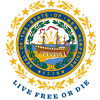Search
Here are your search results.
Showing 1-10 of 327 results for “disease”
-
Disease prevention and control is at the heart of many public health programs in the Division of Public Health Services, including the following areas.
-
Lyme disease is the most common tick-borne illness, approximately 476,000 people may get Lyme disease each year in the United States. If you are spending time outdoors, remember to use an effective in
-
Press Releases DHHS Identifies Five People Diagnosed with Legionnaire's Disease After Visiting Area in Downtown Lincoln, NH (08/12/2024) Legionnaire's Disease Associated with Meredith Woods an
-
Infectious Disease Control programs investigate and record information about illnesses in a community to stop or slow the spread of the illness. These illnesses include, but are not limited to flu, se
-
The purpose of the Rare Disease Advisory Council is to provide information on rare diseases in New Hampshire and to advise and make recommendations to the Department of Health and Human Services and t
-
VPD Surveillance Program Objectives Monitor for diseases that are prevented by vaccinations Detection of outbreaks and new pathogens Control the spread of vaccine preventable diseases Prom
-
Disease Surveillance Public health data can be used in a variety of ways for the prevention and control of disease. This data can be used to monitor the health of the community and to detect
-
Ebola Virus Disease (EVD) is a rare and deadly disease in people and nonhuman primates. The viruses that cause EVD are located mainly in sub-Saharan Africa. People can get EVD through direct contact w
-
(Adapted from CDC) Many people interact with animals in their daily lives, both at home and away from home. However, animals can sometimes carry harmful germs that can spread to people and cause il
-
NH RSA 141-C and He-P300 mandate reporting of all the listed infectious diseases on the Reportable Diseases List by all physicians, laboratories, and health care providers. The Bureau of Infectious Di



